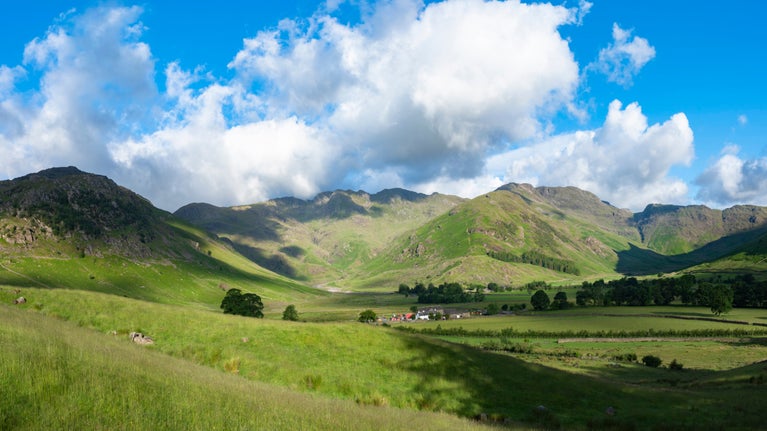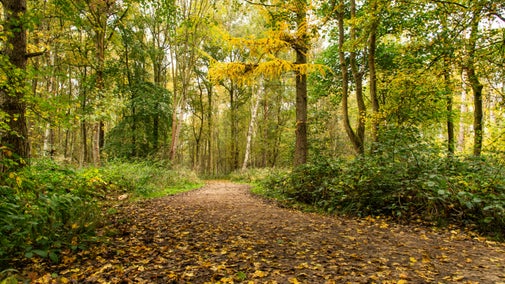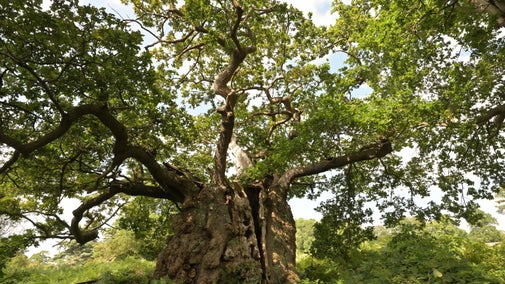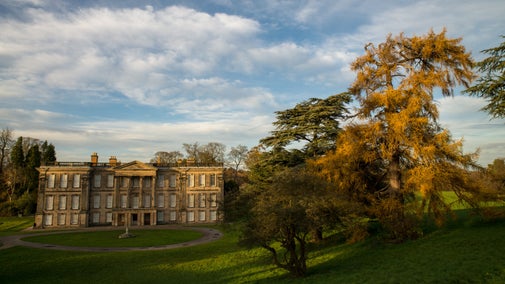
Nature conservation
From ancient trees to bees and butterflies, our places are full of life. We're working hard to safeguard nature for years to come.

This week 38 rare hazel dormice have been reintroduced into the heart of the National Forest in a large secluded woodland at Calke Abbey, in Derbyshire. Led by wildlife charity People’s Trust for Endangered Species (PTES) and partners, the reintroduction is part of ongoing conservation efforts to save this endangered species from extinction in the UK.
Despite once being a common feature of the UK’s woodlands, PTES’s ‘State of Britain’s Dormice’ 2019 report shows that nationwide populations have declined by 51 percent since 2000 and dormice are now considered extinct in 17 English counties.
The reintroduction is taking place in the historic Calke Abbey Estate, made up of woodland, wood pasture, hay meadows, wetlands and farmland, with a third of the parkland recognised as a National Nature Reserve and a Site of Special Scientific Interest.
Since the National Trust took ownership of Calke in 1985, the ranger team have managed the estate to support an array of different wildlife, from numerous raptor species and mammals down to the smallest of invertebrates.
In the last decade, the ranger team have been improving the existing habitats found across the estate and increasing the amount of specific habitats such as wood pasture. Last winter, they planted 164 parkland trees for this reason, in partnership with the National Forest, with more planting planned.
Countryside Manager, Jon Lewney says: ‘This is a nationally important nature-rich habitat that has been lost across large swathes of the UK. Part of Calke’s 50-year vision is focused on expanding this habitat, as planting open grown trees is key to supporting a variety of wildlife. It’s these trees that will have the chance to develop a full canopy and therefore support hundreds of species in the future.’

In 2019, Native Forestry Ltd planted more than 3,000 trees in Casey’s plantation to expand the existing woodland at Heath End. The ranger team later planted more than 500 bluebells as part of their woodland management plan, and there are further plans to increase the tree planting and widen the hedgerows along the tramway edge. This will create a nature-rich corridor for wildlife between Calke’s existing woodlands.
Jon continues: ‘We’re thrilled to be welcoming hazel dormice to the Calke estate and have made sure the environment contains a number of different species with a varied age structure, which will provide lots of secure places for them to forage and nest. We’ve removed the non-native larch, created glades, replanted with a variety of broadleaved species, and fenced the hedgerows of the surrounding farmland to allow them to grow wider and denser, creating perfect habitats.’
All dormice released are provided by the Common Dormouse Captive Breeders Group (CDCBG) after they undergo a eight-week quarantine and receive full health checks by expert vets at Paignton Zoo and Zoological Society of London’s Disease Risk Analysis and Health Surveillance (DRAHS) team. After reintroduction day, the dormice are left to acclimatise to their new surroundings from the safety of their nest boxes, with food and water nearby.
‘Moving forward, a team of trained Calke volunteers will top up their food and water daily and monitor how much they’re taking, with the hope that the dormice will make themselves at home in the woodland. Our volunteers will continue to monitor the hazel dormice over the coming months and years to ensure they remain healthy, and in time we hope they breed and disperse into nearby woodlands to create a self-sustaining wider population,’ says Lewney.

From ancient trees to bees and butterflies, our places are full of life. We're working hard to safeguard nature for years to come.
From wildlife and woodland management to historic planting in the garden, discover more about the vital conservation work we do in the outdoors at Calke Abbey.

White-clawed crayfish have been successfully relocated from Calke Abbey to an Ark site. Discover more about this endangered species and the work we've carried out to help safeguard their future.

Reconnect with nature and make yourself at home in acres of historic parkland on the Calke Abbey estate in Derbyshire.

Explore more of Calke Abbey on a guided tour, walk or talk – from behind-the-scenes tours in the house to garden and parkland rambles.

The un-stately home and country estate
